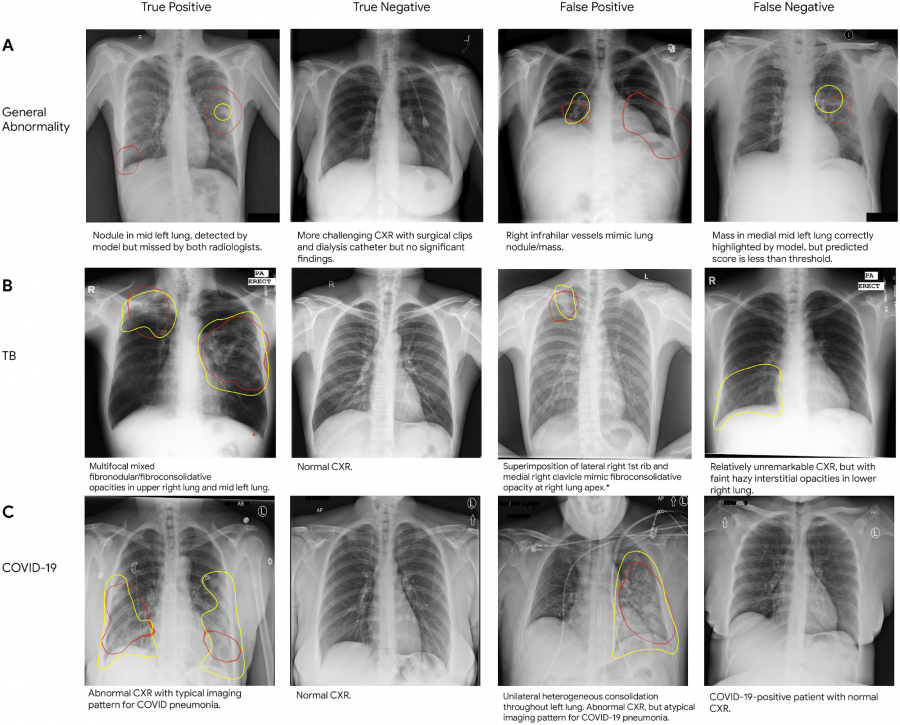
The deep learning algorithm developed by Google AI recognizes a wide class of diseases from chest X-rays. The model was able to recognize abnormal images of patients with diseases that were not presented in the training dataset.
Previously, tools for detecting specific diseases, such as lung cancer, tuberculosis and pneumothorax, have already been developed on the basis of deep learning. However, due to the fact that they are trained to detect a specific disease, the use of these algorithms is limited in cases where a wide range of deviations may appear in the patient. Therefore, a general-purpose algorithm that finds all possible anomalies can greatly facilitate the diagnostic process. However, the development of a classifier for this task is complicated by the variety of anomalies that may be present on the X-ray image.
An article published in the journal Scientific Reports presents a model that is able to distinguish between anomalies of various types on chest X-rays.
The used deep learning model is based on the EfficientNet-B7 architecture, pre-trained on ImageNet. A dataset containing more than 200,000 anonymized X-ray images of patients from India was used for training. Each image was labeled as “normal” or” containing anomalies ” based on the analysis of medical reports using natural language processing models. The model was tested on several datasets. The AUC index was 0.95-0.97 for the detection of tuberculosis and 0.65-0.68 for the detection of COVID-19.
The algorithm reduces the processing time of non-standard cases by 28% compared to manual study of images. Google AI suggests using the model to identify patients who require immediate treatment, and batch processing images of healthy patients to confirm the absence of diseases.